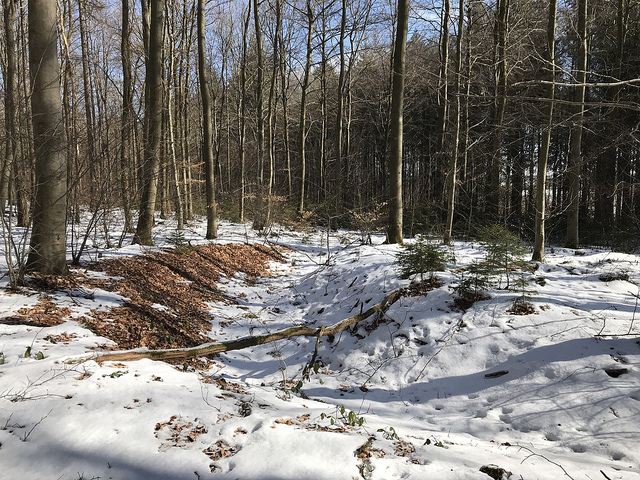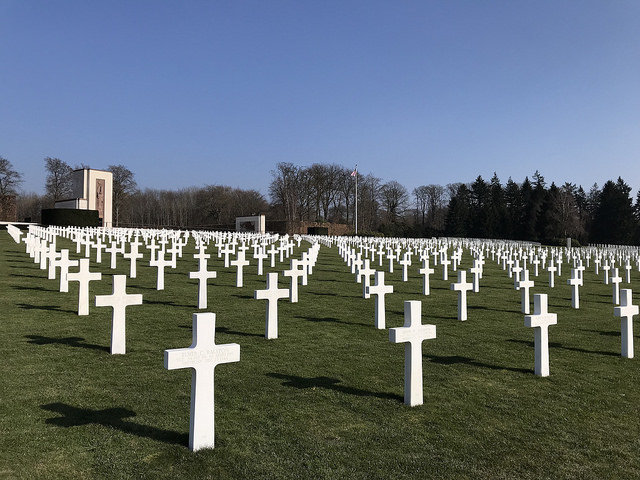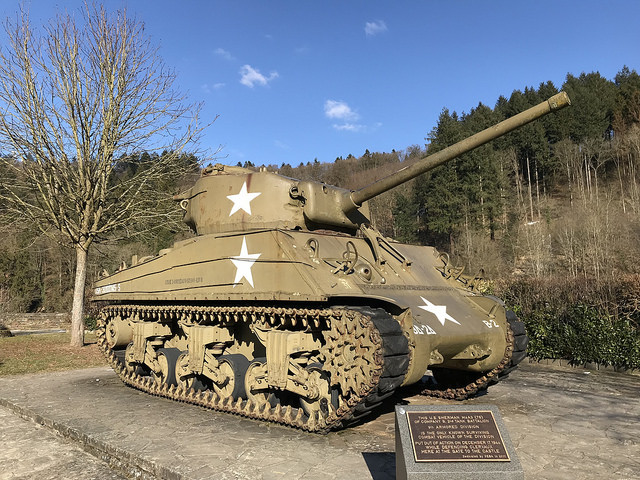The new Following General Patton: Battlefield Luxembourg tour was launched last autumn and recently myself, and a team of guides, went to Recce the area in preparation for this year’s tours.
Battlefield Recces are an important part of the guide’s process of getting ready for a tour, as it gives them a chance to work out how the tour will run, explore the sites we have chosen to include in the itinerary and examine ways to make the experience for those who travel with us, all that they expect.
This particular tour looks at WW2 in Luxembourg, perhaps a country that we do not always associate with this war.
Overrun by the Germans in 1940 during the Blitzkrieg, the country was occupied for four years until liberated by American troops in September 1944.
It was invaded and overrun again in December 1944, when the Germans launched Operation Wacht am Rhein – what the Allies called The Battle of the Bulge, something that we examine all of the aspects of during the days we are on the battlefields.
Museums feature quite heavily on this tour, and we have been pleased to incorporate a number that we have previously never been able to do.
At the top of the list of these is the National Museum of Military History in Diekirch. This museum has an amazing array of WW2 weapons, uniforms and equipment, all displayed superbly via dioramas.

We were staggered to go upstairs to find a massive vehicle hall which has everything from Jeeps to half-tracks, even a German Hetzer. This was way beyond what we were expecting – and then the museum seemed to go on and on, with floor after floor!
We were also fascinated by the Patton Museum in Ettelbruck. It is much smaller than Diekirch but it explains a lot about the early war in Luxembourg, and the German occupation, before looking at Patton’s role in the area in both 1944 and 1945.
Patton visited Ettelbruck during the Liberation where there is now a memorial to him on the outskirts of town; an impressive statue of ‘Old Blood and Guts’, looking over the area where his men fought, and we see this on the tour, too.
Exploring the battlefields of Luxembourg, we all remarked how it was classic ‘Battle of the Bulge’ country, even more so than some of the areas around Bastogne; big open fields (full of snow like in 1944, when we were there), and then valleys and wooded areas.
Paul Errington, one of our guides who will lead this tour in 2018, took us to Schumann’s Eck, an area that changed hands several times, where we found foxholes and positions in the wood; close enough to the road for us to see when we are on tour.

For those interested in WW2 hardware, the amount of equipment still on the battlefield is amazing. On the tour Sherman tanks of various types will be seen at Clervaux, Ettelbruck, Vielsam, and Wiltz, and examples of their nemesis – the 88mm anti-tank gun – also seen at locations like Troisvierges, where a battle-damaged Pak 43 version will be visited.
We cross into neighbouring Germany at one point, going over the Sour River which Patton’s men assaulted over in 1945.
Our objective is to look at part of the Westwall, or Siegfried Line, at Irrell. This is now owned and run by a group of volunteers, many of whom are local firemen. They have cleaned out the substantial bunker complex and made it easily accessible.
The site is one of the few in Germany where you can explore the Westwall like this, and as you make your way down the different levels, it is soon apparent how strong this was in 1939, equipped as it was with machine-guns and flame-throwers.
We pay our respects to the dead from the fighting in Luxembourg at the American Cemetery, close to Luxembourg City. Not only is General George S. Patton buried here, but the 5,000 plus graves are men who largely died in the fighting during the Battle of the Bulge in this region, or during the final push into Germany in early 1945.

The rows and rows of white crosses are impressive, especially when you think that over 60% of the dead were repatriated after WW2. Close by, we contrast the US Cemetery with the German one at Sandweiler. This cemetery also reflects the German losses in Luxembourg, from the Blitzkrieg in 1940 through to the Bulge offensives in 1944.
This promises to be a fascinating tour, in a picturesque country with good food and drink, and a lovely hotel to return to each day to relax, unwind and pause to think about the impressive locations you’ve seen which are connected to some of the most important history of the Second World War. The perfect battlefield tour combination.


When will this tour begin, how many days and tour cost ?